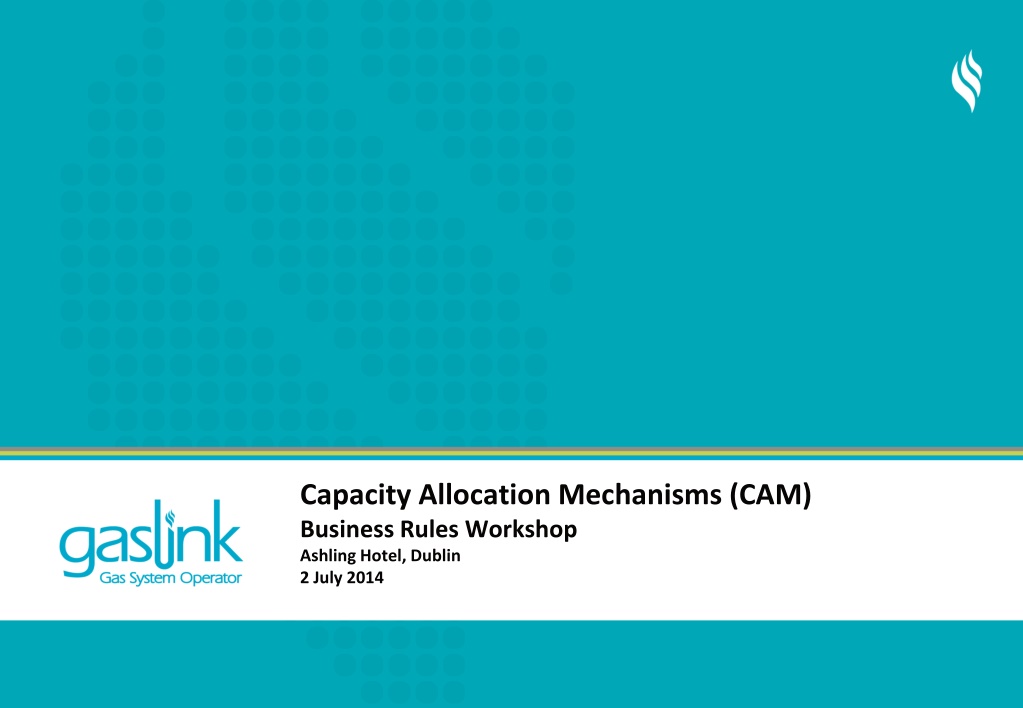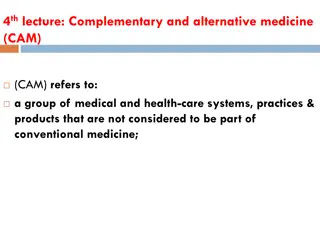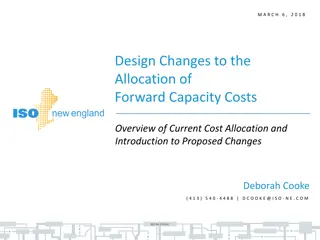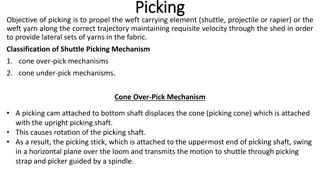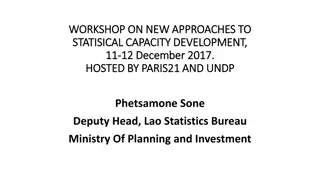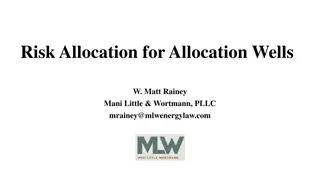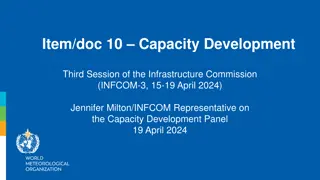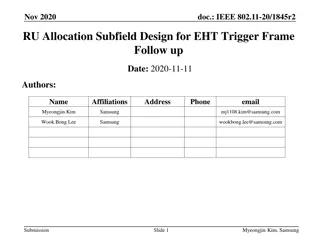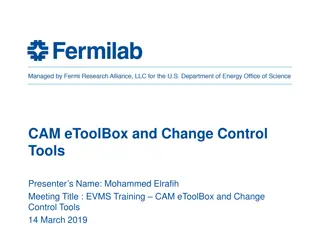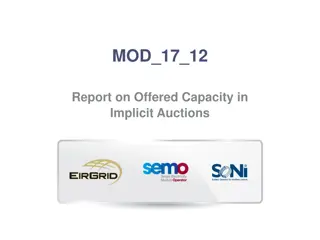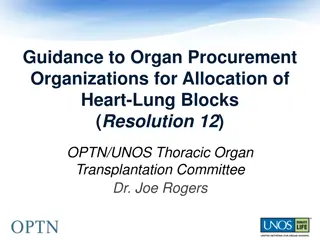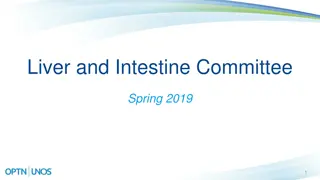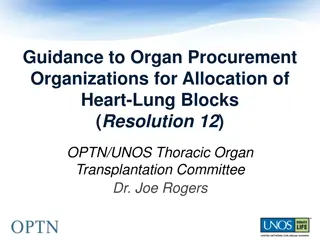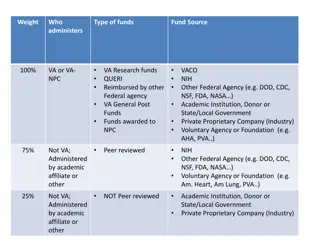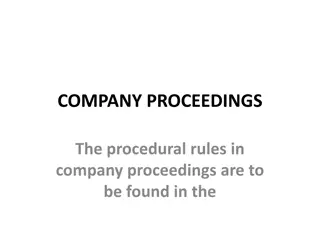Capacity Allocation Mechanisms (CAM) Business Rules Workshop Summary
This summary provides insights into the Capacity Allocation Mechanisms (CAM) Business Rules Workshop held at Ashling Hotel, Dublin on July 2, 2014. The workshop covered topics such as CAM business rules scope, key features, auction processes, code modifications, implementation timelines, and consultation periods. It detailed the consultation process, agenda items, and included information on generic capacity allocation rules, shipper registration processes, capacity products, auction methodologies, and secondary capacity market rules. Additionally, it mentions subsequent consultations that will address congestion management procedures and tariffs.
Download Presentation

Please find below an Image/Link to download the presentation.
The content on the website is provided AS IS for your information and personal use only. It may not be sold, licensed, or shared on other websites without obtaining consent from the author. Download presentation by click this link. If you encounter any issues during the download, it is possible that the publisher has removed the file from their server.
E N D
Presentation Transcript
Capacity Allocation Mechanisms (CAM) Business Rules Workshop Ashling Hotel, Dublin 2 July 2014
Agenda 1 Introduction & Background 2 CAM Business Rules: Scope 3 CAM Business Rules: Key Features 4 CAM Business Rules: Auction Process 4
Code Modification A062: Capacity Allocation Mechanisms at Interconnection Points Timeline August 2011 March 2012 September 2012 Jan & Apr 2013 October 2013 ACER published Framework Guidelines ENTSOG Submits CAM Network Code ENTSOG resubmits NC based on EC Reasoned Opinion Comitology Meetings CAM Network Code published in EU Journal in the form of Regulation EU 984/2013 Gaslink / Shipper Impact Assessment Workshop Gaslink circulates Code Mod Proposal A062 CAM Business Rules consultation (3 weeks - responses due by 18 July) CAM Business Rules Workshop Implementation Date: Regulation 984/2013 November 2013 23 June 2014 27 June 2014 2 July 2014 1 November 2015 5 CAM
CAM Business Rules: Consultation Period 6 CAM
Agenda 1 Introduction & Background 2 CAM Business Rules: Scope 3 CAM Business Rules: Key Features 4 CAM Business Rules: Auction Process 7
CAM Business Rules: What s included? Generic capacity allocation rules and processes to apply at Irish IPs; Shipper Registration Process on PRISMA; Definition of the functions which will be performed by PRISMA as distinct from GTMS; Definition of Capacity products which will be available at Interconnection Points; Process by which Shippers may request such Capacity (submission of auction bids); Description of the capacity allocation methodology (auctions) applied to each product; Communication of auction results via PRISMA and consequent update to GTMS; Secondary Capacity market rules at Interconnection Points.
Subsequent Business Rules Consultations: CAM related items The following are not included in detail in the CAM Business Rules, but will be dealt with by means of separate consultations: Congestion Management Procedures (CMP); Tariffs: minimal references to Tariffs in CAM BRs; CER Tariff Consultation Paper to follow; Transitional Arrangements: Phasing out of existing capacity booking arrangements Financial Security requirements; Virtual Reverse Flow (VRF): Full product business rules to be included in later consultation
Agenda 1 Introduction & Background 2 CAM Business Rules: Scope 3 CAM Business Rules: Key Features 4 CAM Business Rules: Auction Process 10
CAM Business Rules: Supporting Information Date Source Reference October 2013 European Union Regulation EU 984/2013, Capacity Allocation Mechanisms (CAM) Network Code 2009 (updated in 2012) European Commission Regulation (EC) No 715/2009 updated with the Commission Decision 2012/490/EU of 24 August 2012 April 2013 Gaslink Consolidated Gaslink Code of Operations v4.0 as of 1 April 2013 23rd June 2014 Gaslink Code Mechanisms at Interconnection Points Proposal Form Modification Proposal A062 Capacity Allocation PRISMA ENTSOG Joint Transporters PRISMA capacity platform website ENTSOG Pilot Auction Calendar UNC Modification No. 0500: January 2014 1 May 2014 Office of Gas EU Capacity Regulations Capacity Allocation Mechanisms with Congestion Management Procedures 11 CAM
RECAP: CAM Key Features Standard Capacity Products Annual (up to 15 years), Quarterly, Monthly, Daily, Within-Day Capacity Auctions (Joint Booking Platform) Capacity sold via auction level of demand determines clearing price Standardised EU-wide auction calendar Entry and Exit Capacity at both sides of an IP is bundled together and sold as a single product Bundling of Capacity Change to Gas Day Gas day 05:00 - 04:59 UTC (currently 06:00 05:59) 12 CAM
RECAP: General Information Capacity Auctions All standard capacity products must be sold by means of Capacity Auctions EU-wide auction calendar will be published by ENTSOG each year Default dates/times in Regulation 984/2013 may be superseded by ENTSOG Calendar Pilot Auction Calendar published by ENTSOG in January 2014 HARMONISED! Same products sold at the same time at all IPs across EU 2 auction designs: Multiple round ascending clock auction algorithm (yearly, quarterly, monthly) Single round uniform price auction algorithm (daily and within-day) 13 CAM
Implementation Timelines: CAM When? 1 November 2015 (staggered) - Auctions - PRISMA - Bundling Where? Interconnection Points When? 1 October 2015 Gas Day Where? Across entire network
Capacity Product Matrix at IPs: Auction Start (Default) Allocation Method Product Start Time Impact of CAM Product Bundled Unbundled Frequency 1 October LONGER BOOKING LEAD TIMES Ascending Clock Auction 1st Monday in March Annual Annual (up to 15 years ahead) 1 October 1 January 1 April 1 July Ascending Clock Auction 1st Monday in June NEW PRODUCT Quarterly Annual Ascending Clock Auction Uniform Price Auction 3rd Monday in month 1st of each month Minimal impact Monthly Monthly Day- Ahead Minimal impact Daily 15:30 D - 1 05:00 D Hour bar + 4 from start of Bid Window Within- Day Uniform Price Auction Minimal impact Hourly [18:00 D 1]
Schedule of First CAM Auctions: First Capacity Effective Date Product First Auction Date 31st October 2015 1st Nov 2015 Within-Day 31st October 2015 1st Nov 2015 Day-Ahead November 2015 1st December 2015 Monthly March 2016 1st October 2016 Annual 1st October 2016, 1st January 2017, 1st April 2017, 1st July 2017 June 2016 Quarterly
Bundled vs. Unbundled Capacity: BUNDLED CAPACITY EXAMPLE: at Moffat, a bundled product is a single capacity product comprising: Gaslink Entry Capacity; and NTS Exit Capacity Shipper must be registered at both sides of IP to take part in bundled auctions on PRISMA: When Shipper obtains bundled capacity by means of an auction: Auction result means that the Shipper enters into 2 separate capacity contracts with each TSO Shipper will be invoiced separately by each TSO UNBUNDLED CAPACITY EXAMPLE: at Moffat, an unbundled product is a capacity product comprising: Gaslink Entry Capacity only. Shipper does not need to be registered at both sides of IP to take part in unbundled auctions: Unbundled auctions (on PRISMA) to be held simultaneously with bundled auctions
Bundling of Capacity: Reg 984/2013 Art. 20 - Capacity should be bundled as soon as possible - Existing unbundled contracts should be phased out over time Regulation 984: TSOs Shippers Where a Shipper holds existing unbundled capacity, a Shipper should aim to bundled the capacity (Art. 20 (1)) TSOs shall bundle capacity insofar as there s sufficient capacity available. Where TSO1 has more capacity available than TSO2, TSO1 may offer balance as unbundled. Shippers may avail of voluntary bundling process . Unbundled may not be offered for duration of more than one year, unless .. Single Shipper (EIC) to submit bundling request to Transporter Transporter and Adjacent Transporter Approval required Unbundled is contracted for longer than one year at other side of IP; then unbundled can be offered to match that period If approved, capacity is registered as bundled
Capacity Booking Platform at IPs: PRISMA PRISMA shall fulfil the function of the joint web-based booking platform on which capacity at IPs can be booked and traded Gaslink has entered into a service agreement with the PRISMA Capacity Platform In order for a Shipper to access capacity at an IP, it must register with PRISMA In order for a Shipper to access capacity at an IP, it must be approved by both TSOs at the IP GB RoI Capacity Bookings: Now vs. Post-CAM Now Gemini Post-CAM NTS Exit Capacity IP Capacity Domestic Entry Point Capacity (Inch & Corrib) Exit Capacity PRISMA GTMS GTMS
Capacity Booking Platform at IPs: PRISMA Registration Process
Capacity Booking Platform at IPs: Bundled Capacity Auction Process Bundled Capacity Auction Process Transporter Available Capacity, Tariffs, Price Steps, FS GTMS Compile auction data Receive auction results Update Capacity Register Run M + 1 Billing Process PRISMA Publish auction data Publish auction results Run auction Shipper View updated Capacity Register Receive auction result Receive Invoices from both TSOs View auction Submit Bids Adjacent TSO Available Capacity, Tariffs, Price Steps, FS Update Shipper s Capacity Info Compile auction data Receive auction results Run Billing Process
Tariffs: Tariff for Bundled Auction Auction Design TSO1 Reserve Price TSO1 Large Price Step TSO1 Small Price Step Tariff Input: TSO 1 + + + + TSO2 Reserve Price TSO2 Large Price Step TSO2 Small Price Step Tariff Input: TSO 2 = = = = Auction Reserve Price Auction Large Price Step Auction Small Price Step Auction Tariff Billing Clearing Price (TSO1 share) TSO1 Invoice Run Auction Clearing Price Shipper Clearing Price (TSO2 share) TSO2 Invoice Auction
Capacity Offered in an Auction: Available Capacity Technical Capacity Technical Capacity of the Interconnection Point - Contracted Capacity Capacity which has already been sold in respect of the given period - 20% of unsold Technical Capacity withheld from the Annual IP Capacity Auctions applying to Gas Years Y + 5 to Y + 15 inclusive. Set-Aside Capacity 10% of unsold Technical Capacity shall be withheld from the Annual IP Capacity Auctions applying to Gas Years Y + 1 to Y + 4 inclusive. + Any Capacity which becomes available for reallocation as a result of congestion management procedures CMP Capacity = Capacity which is published as available and offered in a given auction Available Capacity
Financial Security: Status Summary Product Currently Proposed Comments Daily FS put in place after capacity booking approval TBD Review needed given changing environment for short term bookings Monthly 100% FS required prior to capacity booking approval As per current rule Quarterly N/A TBD Review needed: Annual FS equivalent to 72 days worth of capacity required in advance of capacity booking approval TBD Disconnect between time of booking and time of utilisation
Secondary Capacity Key Concepts Capacity rights transfer to the Transferee (NOT assignment) Transfer of Use Obligation to pay the Transporter for the capacity remains with holder of Primary Capacity Over the Counter (OTC) Shippers enter into a bilateral agreement to trade (price and conditions agreed) prior to initiating Trade Proposal Submitted by Transferor (proposal to sell) or Transferee (proposal to buy) on PRISMA Trade Proposal Requires approval by counterparty, Transporter and Adjacent Transporter
Secondary Capacity Process Chart
Secondary Capacity: Back-Up Entry Capacity Back-up Entry Capacity: a) will not be facilitated at IPs; and b) will not be facilitated at domestic Entry Points 1 Back-up Entry Capacity was introduced to provided a form of security to Shippers holding Capacity at production connected Entry Points. Original Rationale Where a risk to the supply from the production connected Entry Point existed, Shippers had a facility to book capacity at an alternative Entry Point at a reasonable cost. Short term products did not exist in the Code when the Back-up Entry Capacity product was introduced Incompatible with CAM: Cannot use a bundled product as back-up for an unbundled product Current Status Superseded by newer products: Availability of short term products means that a Shipper holding Capacity at production connected Entry Points can gain access to capacity to cover the period of interruption. The product has not been bought since 2007.
Secondary Capacity: Entry Point Capacity Entry Point Transfers: a) will not be facilitated at IPs; and b) will be retained in relation to non-IPs 2 To enhance the viability of new entry points by allowing a Shipper with an annual booking at an existing entry point the option to move the capacity to a new entry point (which comes on stream mid-year). Original Rationale Incompatible with CAM at IPs: Cannot transfer bundled capacity at one point with unbundled capacity at another Current Status Is there a demand for retention of this product at non-Ips?
Secondary Capacity: Entry Capacity Trade Updates & Reductions Entry Capacity Trade Updates & Reductions: Remove Entry Capacity Trades & Updates IPs ; and Remove restriction whereby Shippers can only Trade Primary Capacity 3 & 4 Entry Capacity Trade Updates and Reductions allow a Shipper to recall capacity it has previously sold on the secondary market principal reason was to allow a Shipper who had transferred NDM Exit Capacity to cancel a Capacity Transfer where the demands of the NDM market so required. Original Rationale Principal rationale no longer holds (i.e. NDM Exit transfers no longer permitted) Example: Current Gaslink rules are substantially different to National Grid rules At IPs: Significantly divergent rules at an IP could render secondary market ineffective as both TSOs must approve trades as per their own rules - without approval of both TSOs, trades will be rejected. At domestic Entry Points: operating two different regimes at IPs and domestic Entry Points may not be appropriate requirement to allow recall creates the need to restrict the trade of capacity which has already been traded due to complexity of tracking the capacity Current Status Removing the recall facility removes this restriction, thus reducing IT complexity and facilitating the trade of Secondary Capacity Original capacity holder remains liable for payment (no change proposed) BRs to propose changes in respect of IPs only - changes at non-IPs to be addressed via Mod A060
Agenda 1 Introduction & Background 2 CAM Business Rules: Scope 3 CAM Business Rules: Key Features 4 CAM Business Rules: Auction Process 30
Ascending Clock Auctions: Auction Algorithm To apply for yearly, quarterly and rolling month auctions Several binding bidding rounds with ascending prices (starting at reserve price) Bidders bid capacity amounts against successively announced prices (new bidding round opened if demand > supply) Auctions ends as soon as demand supply Number of bidding rounds not defined, but quick convergence ensured through different/adjustable price steps Value of capacity can be validated bypublication of aggregated demand between bidding rounds
Ascending Clock Auction: Bid Process: applies to annual, quarterly, monthly Annual: 15 x independent auctions run simultaneously Quarterly: 4 x independent auctions run simultaneously Monthly: Rolling auctions each month for M+1 Bid Window = 08:00 17:00 (may be over multiple days) 1st bidding round = 3 hrs Subsequent biding rounds = 1 hr (with 1hr gap) Multiple bids accepted Bids may be amended, withdrawn within bidding round Mandatory to place bid in first round Bid in round R+1 must be <= bid in round R NOTE: Where aggregate capacity bids <= capacity offered in auction, auction will end after one bidding round, with capacity allocated at the reserve price i.e. regulated tariff Automatic Bid Profile may be programmed in advance ( comfort bid function)
Uniform Price Auction: Auction Algorithm To apply for daily and within day auctions Single bidding round Bidders bid capacity amounts and price Auctions ends at predefined point of time Bidders are allowed to freely review their bids until last moment Clearing Price = lowest successful bid price ALL Shippers pay the clearing price, regardless of what they bid
Uniform Price Auction: Bid Process: applies to day-ahead & within-day Day-ahead Bid Window = 16:30 17:00 D - 1 Results published by 17:30 D - 1 & capacity effective at 05:00 D Within-Day Auction No.1: 18:00 - 01:30 D - 1 Within-Day Auction No.2: 02:00 - 02:30 D - 1 Subsequent biding rounds = 1 hr New auction each hour thereafter Last auction 00:00 - 00:30 D Results published 30 mins after close of auction and capacity becomes effective 4 hours after start of auction Multiple bids permitted each bid treated independently Automatic Bid Profile may be programmed in advance ( comfort bid function) NOTE: Where aggregate capacity bids <= capacity offered in auction, auction will end after one bidding round, with capacity allocated at the reserve price i.e. regulated tariff Clearing Price = lowest successful bid
